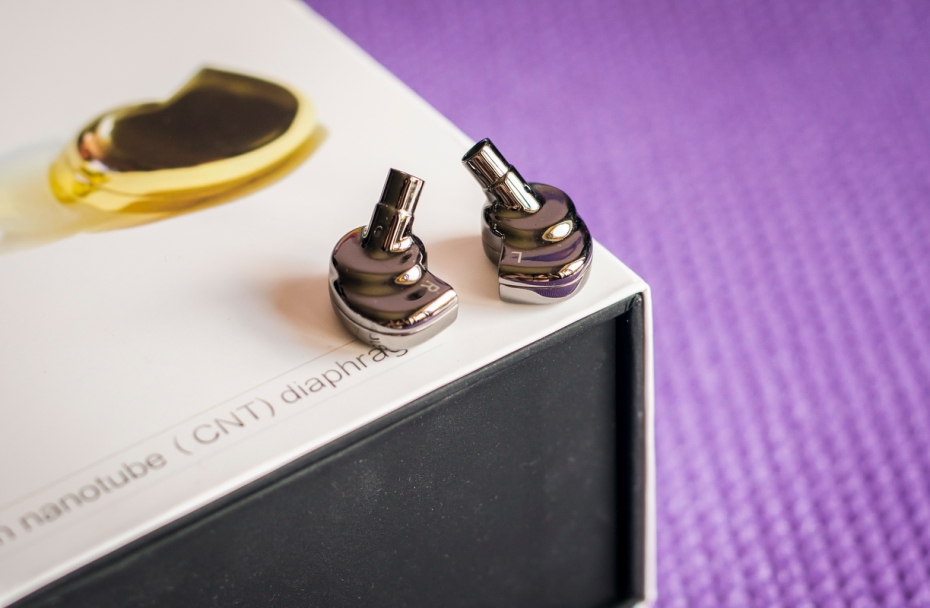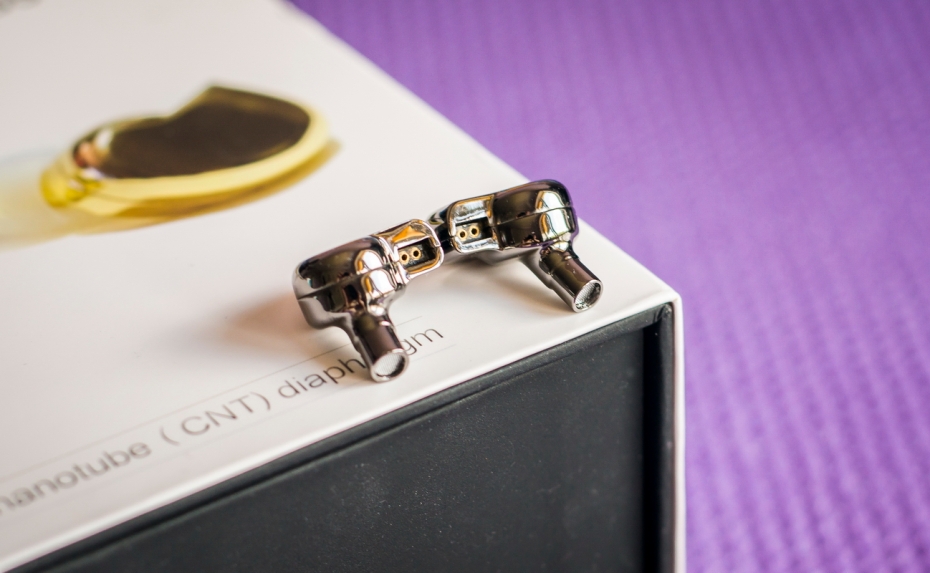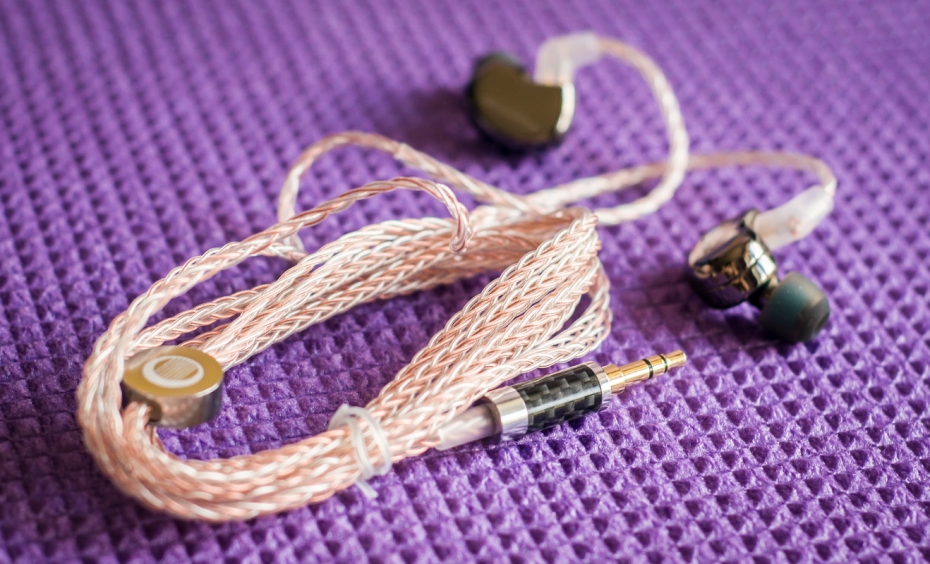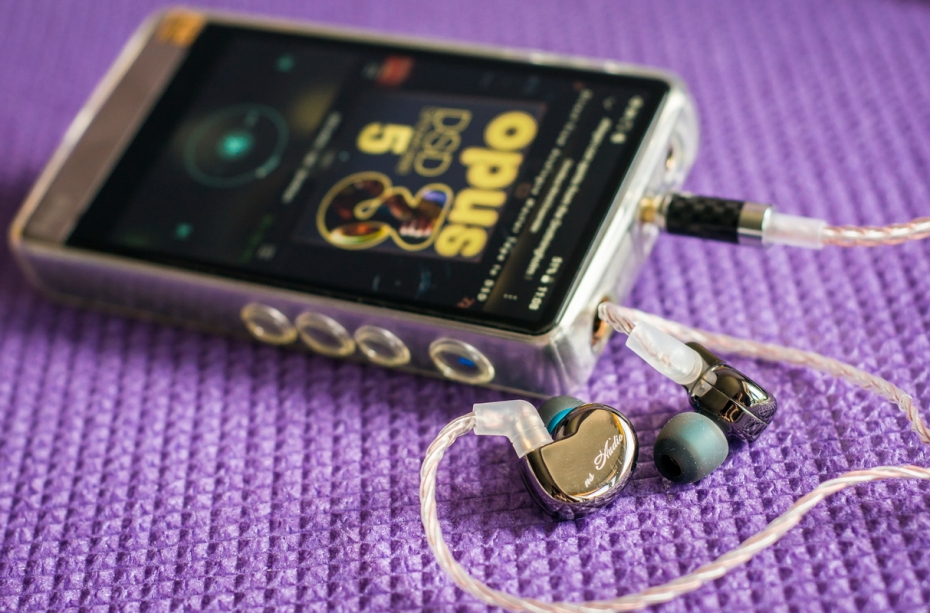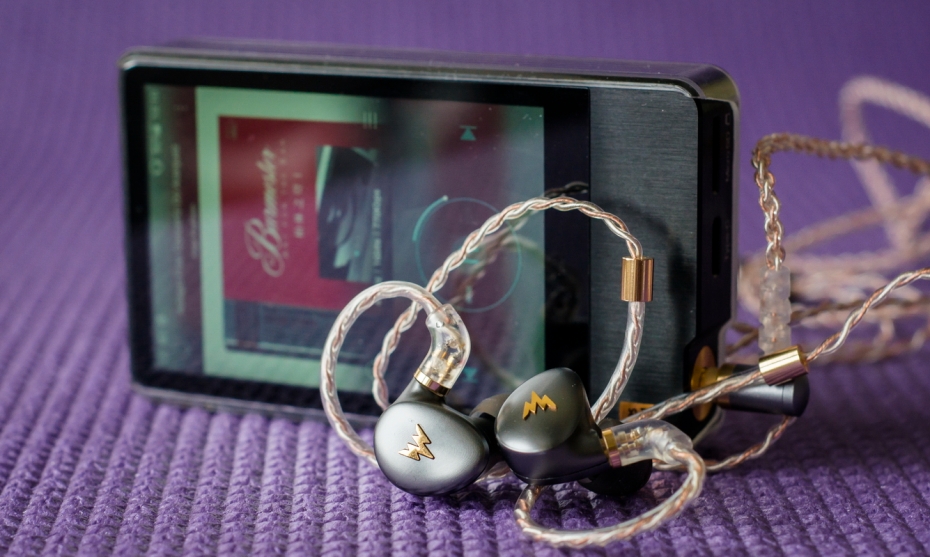New experience and new IEM brand for me — Nature Sound (NS Audio) from China — starts with examining their mid range model NS5, codename «Dream Bridge». As declared, NS5 IEMs were tuned by the professional composer Fang Dong Qing and the code name is actually the name of his symphony. Description also states that there were 15 attempts until the sound got the appropriate tuning… This review would show whether my personal preferences in sound coincide with the author’s vision.
NS Audio NS5 technical specifications:
- Driver type: 10mm carbon-nanotube diaphragm dynamic driver
- Impedance: 32Ω
- Frequency response range: 4Hz — 50kHz
- Sensitivity: 108db@1KHz
- Distortion: <0.2%
- Shell material: magnesium-aluminum alloy
- Audio jack: 3.5mm, gold-plated
- Cable: 1.2m, 8-core 4-strand OFC
- Weight: 14g/channel
Packaging, design and build quality:
NS5 come in black box with white additional cover that contains model name and brand names + NS5 picture and technical description on sides and at the back. Black box itself has soft-touch (satin) finish and repeats brand logo and model name in silver.
Box inside is split into three layers: top soft insert with openings for IEMs and cable, middle separating insert and additional accessories at the very bottom.
Box contents:
- NS5 IEMs
- audio cable
- 9 pairs of silicone eartips (3 x 3 sets of different shape and size)
- 1 pair or 2 flange eartips
- cable clip
- storage case
- product leaflet in Chinese
Storage case that comes with NS5 IEMs is pretty standard — its design is shared across different brands (TFZ, Hidizs, etc). Good case with plenty of room inside and secure locking mechanism.
Wide variety of eartips is a must for IEMs with quite irregular shape to fit the best fit for anyone. I’ve ended up with S-size grey/blue ones. The rest are either not so comfortable or produce less bass impact for me.
NS5 shells are molded of magnesium-aluminum alloy and consist of two parts: top cover and base. Molding of parts is very accurate and the joint is neat and almost invisible. Both parts are polished and produce strong mirror effect — very hard to take a picture maintaining the original color due to the amount of reflections of the outside world.
Top covers of left and right channels contain «Dream Bridge» and «NS Audio» engravings respectively. Bases also provide L&R indications and form one piece with the output channels.
Compensational openings are located on channels near the point where they convert into base.
Cable sockets are drowned inside the shells between the sides and have a secure and tight sit.
Stock cable is also pretty standard and used accross many products of other brands (Moondrop, for instance). This cable is usually treated as an «upgrade» cable when sold separately. Anyway, this is oxygene-free copper twisted cores in soft silicone braid. Comes with springy earhooks, transparent connector housings, aluminum Y-splitter and combination of aluminum + carbon-fibre audio jack housing. This cable doesn’t produce mic effect.
Fit:
NS5 is not that secure choice in terms of fit in comparison to more standard shapes like «bullet» or «custom». Thin profile, pretty long output channels, soft cable, nice earguides, large amount of different eartips and low weight — all compensate irregular shape and help to find the best fit. This would greatly depend of the personal ear sructure, but it worked for me, at least. Can’t say that the comfortability is of the highest level («custom» shape would alsways be quite better) but totally ok if not trying to jump or run.
Sound quality:
Tested with HiBy R6Pro DAP
Lows and midbass:
Lows got the least amount of presence in NS5 IEMs. It is quite conjested with fast speed of decay. Texturing and amount of details still remains decent and clearly depicts all nuances of the sound, giving you the ability to perceive it disctinctly. But it lacks in volumetric feel and depth of reach. The positive outcome of such tuning approach is the additional clarity in this region, absence of mixing with the other ranges and defined boundaries. Together with the good balance with other ranges in terms of gain — lows are not perceived as inadequate or missing. Main concern addresses the «volumetric» or dimensional amount of presence.
Midbass is free of such concerns, sounds naturally engaging, powerful and tight. Some discrepancies might be observed with high toms in wide dynamic range compositions — those might get quite accented at times. No problems in most of the tracks, though.
Mids and vocals:
Mid section is perfectly tuned to deliver high resolution sound with large amount of details which is kind of rare for single dynamic driver models. The excess of resolution originates from the elevation and aggressive tuning of upper mids/treble, adds the extra clarity and conveys more emotions on vocals. Although, thickness of mids stays surprisingly good with such accent. Male and female vocals both sound rich and full-bodied. Most of the effect of elevation of upper part comes in a form of audible lisping and sibilances that often show up on voices and certain instruments. Not annoying, pretty low in amount but still should be mentioned. Other than that, mids are sounding natural and clear. Very good separation from other ranges and between the instrumetns.
Treble:
The most accented range in NS5 IEMs. It doesn’t mean that it feels sceaming, piercing or standing at front. No, treble is quite accrurate here despite the additional accent. Additional elevation builds clarity which brings the transparency to the sound in overall. Extension is also quite impressive for the dynamic driver model. The only question goes to quite straight forward and more rigid sound that lacks some gentelness and tiny details. But this is common and rarely being a real drawback of dynamic models that are less capable in terms of treble resolution/dynamics in comparison to their BA or piezo rivals.
Soundstage:
One of the best sides of NS Audio NS5 is the large soundstage it creates. Great layering, range and instrument separation together with additional clarity and transparency build more than the average stage. NS5 IEMs are especially good with vertical positioning. If only it had more volumetric bass — NS5 might have taken the leading place in this respect.
Sound in overall:
NS Audio NS5 sound could be described as tending to the bright side with the extra accent and good extension of treble, natural and full-bodied mids, conjested but textured and controured lows. Very good soundstage and clear picture in overall. Should be perfect for many genres with lots of instruments and that do not require extra bass.
Compared to Whizzer Kylin:
Whizzer Kylin IEMs have a hybrid nature and dynamic + BA drivers combined together. This allows wider soundstage and more precise tuning of each range. In fact, Kylin produce deeper bass with better extension, more upfront and thicker mids and very detailed treble. But this model have some serious shortcomings in comparison to NS5: bass lacks textures and sounds very slow and desconnected from the other ranges + terrible fit comfort. I would say that NS5 doing a better job in overall and much more pleasing for long listening sessions.
Compared to SHOZY&NEO CP:
Perhaps, the most similar IEMs in terms of the sound. CPs are great pure BA IEMs with extra resolution throughout the entire frequency range, gentle sound, thick mids and balanced picture. NS5 came very close to the clarity of treble but cannot compete in terms of micro dynamics and treble extension. What is better in NS5 is bass extension and midbass power. NS5 are also a bit brighter which makes the sound less balanced but more emotional and engaging.
Compared to Moondrop Kanas Pro:
One of the two and main unbeatable IEMs (another model is Tanchjim Oxygen) for me. Dynamic driver IEMs with the sound that can compete with the best BA and other rivals… Still the best sounstage, balance between the ranges, clarity of treble and thickness of mids. NS5 are more delicate on treble and mids — a bit thinner and more emotional which is better for many music genres but the lows are not that deep and extended. Both models are capricious in terms of fit.
Conclusion:
Yet, another promissing brand for IEMs with serious approach towards the resulting sound and another product that should be respected at least for its irregular tuning. Tuned by the professional composer, NS Audio NS5 IEMs got too close to the sound of good balanced armature rivals despite its single dynamic driver structure. Impressive bass texturing, resolution on mids, clarity on treble and tendency to brighter side allow to fill the gaps in sound and driver preference for many potentional audio fans. Not that calm and neutral, with the ability to define a learger stage, NS5 sound would convey the additional emotions in most of the genres making each session more engaging and tasteful.
NS Audio NS5 are available at PenonAudio store








